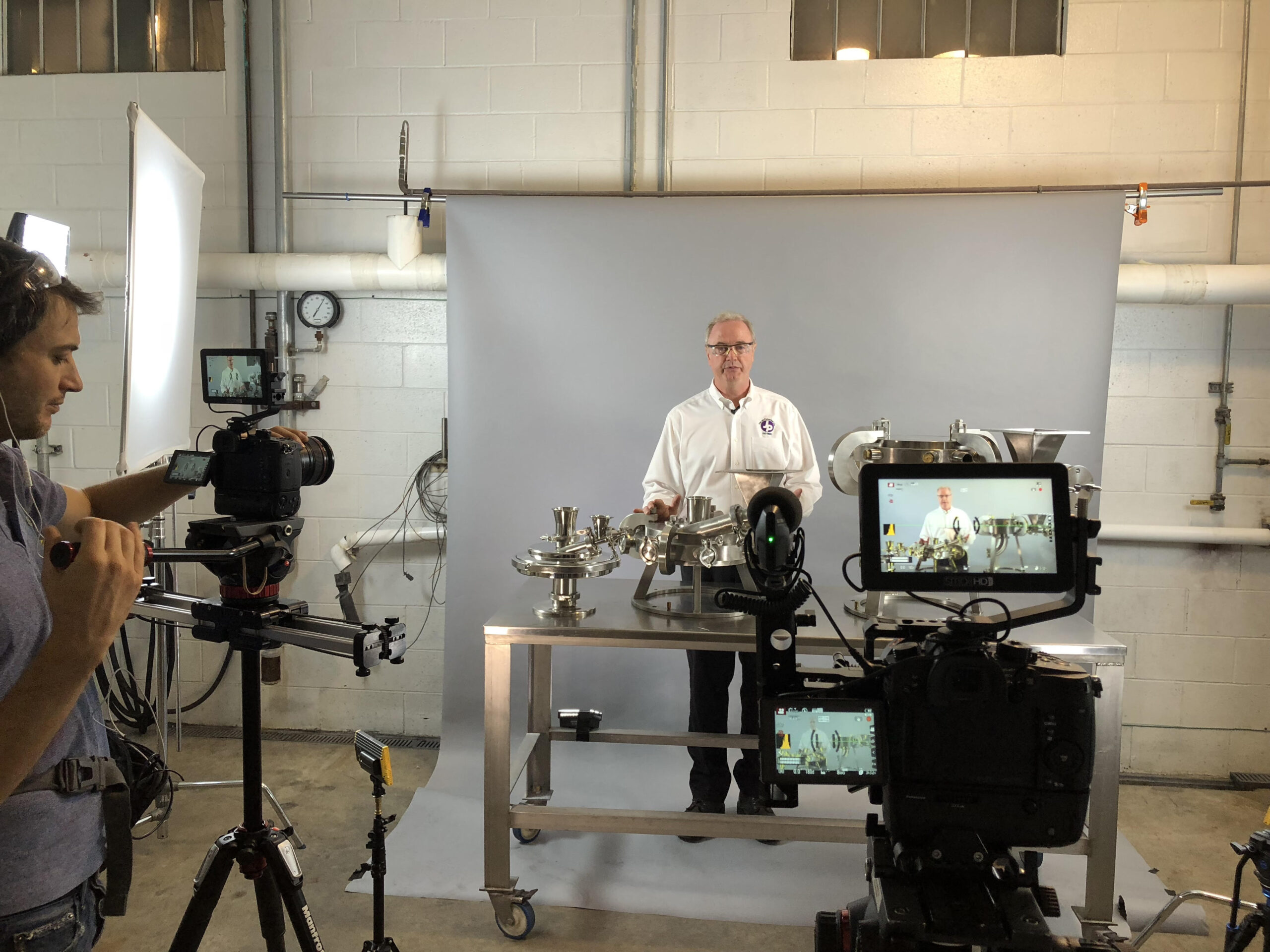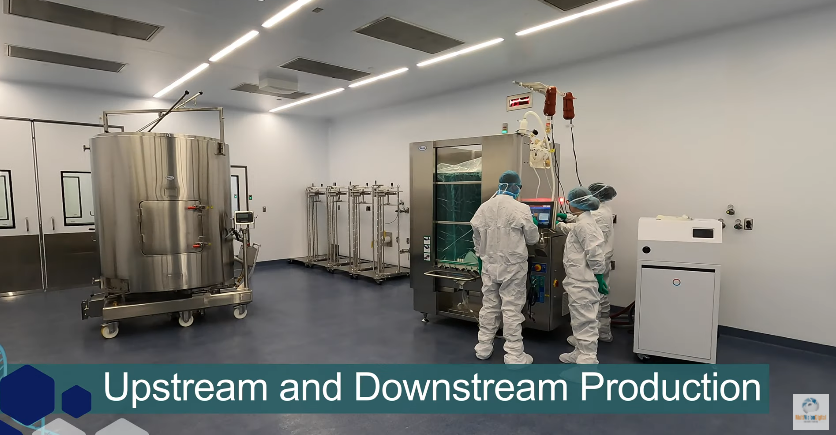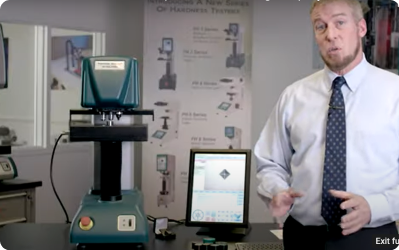Table of Contents
In this special edition blog, we will discuss the topic of how trade show video production can be used in your B2B marketing video strategy to capture visitors’ attention and increase booth traffic to generate more qualified leads and ROI from a trade show.
Interviewer: Adam Bruynestyn, Video Marketing Specialist at MultiVision Digital
We are lucky enough to be joined by MultiVision Digital’s Senior Executive Post-Production Manager, Eduardo Vianna. Eduardo, how are you?
Interviewee: Eduardo Vianna, Senior Executive Post-Production Manager
I’m doing well, thanks.
So, just to start off, why don’t you tell me about the first experience you had editing for trade show videos?
Sure! The first time was, I believe, with a company called StarStar. At their booth, they had built a monitor modeled to resemble a large smartphone. We were tasked with creating a video to play on that monitor that explained and demonstrated their SaaS mobile application.

What were some of the difficulties you faced in the making of this trade show video?
Well, there were the typical difficulties one would expect from the scope of creating a video for a trade show – creating flashy animation to capture the attention of the visitors while ensuring that the visuals don’t overshadow the information, but in this case, using the vertical screen that replicated a smartphone was one of the things that were a bit different for this trade show video project.
But what was really new to me at the time was the context of the trade show video itself. Normally a B2B marketing video is meant to be used in a few very specific use cases, like landing pages, product pages, social media, and the like, and can be leveraged across these channels. And each B2B marketing video is all designed and edited with these use cases and business objectives in mind.
But knowing that this trade show video would only be played exclusively on a giant smartphone replica at the client’s booth, on a busy trade show floor, meant that we needed to refocus our efforts on this one use case.
And how did the final product differ from the type of B2B marketing videos that would be displayed in a normal setting, like on a website or a social media platform?
The first thing to think about is that at a trade show, the audio in your typical video is limited, if non-existent. In a trade booth, with heavy traffic, one thing you can count on is that it will be loud. So there can’t be any narration or audio that is critical to the messaging, because people just won’t be able to hear it.
Thus, the video has to explain everything visually, quickly, and eye-catching in a very impactful way. You could put in subtitles if absolutely necessary, but that leads to another issue: engagement. Most people at a trade show are just browsing, and it’s up to the booth attendants to reel them in.
Visitors may glance at a video as they are passing, but if the video has a voice-over narrative and it’s already past the beginning, people won’t stay to watch the whole thing….and they definitely won’t wait for it to start over. So, a trade show video must be visually engaging enough to entice people to stop and walk into the booth. At the same time, it has to be understood enough that it can be picked up from any point in the runtime, and dropped just as easily to begin a discourse with the booth attendant.
Ready to elevate your video content? Let’s transform your productions together!
Fascinating. So what is the process of shooting a video for a trade show like?
A recent example would be a series of 8 trade show videos we did for Andritz Metals for their booth at AIST. Andritz Metals is a manufacturing company that came to us looking to make some B2B marketing videos highlighting their different fabrication facilities and the services that each facility is equipped to provide.
With a broad plan on what was important to capture at each facility in these trade show videos, we sent out a team to several of their manufacturing and service facilities to build a library of high-quality footage. Since there would be no audio, other than music, it was critical to get high-quality b-roll footage. We had all the cameras and equipment to shoot in 6k quality with a high frame rate (60 fps) to allow for slow motion as well as stabilizing gimbals.
Here’s an example of a video featuring Andritz’s facilities:
Because of our pre-production messaging discussions, we had a plan in place to capture and document an enormous amount of footage. This helped us keep everything organized when we went into the video editing part of the project.
One of the aspects of the production that made the video editing smooth was that everything was shot in a specific order, section by section, sticking to one machine at a time. This ensured that the footage would be inherently grouped together when exported.
We also had the camera operators take a quick shot of the label on each machine (which was part of the pre-production planning) before starting that round of shots. This ensured we could reconcile and Andritz could easily communicate the exact shots they wanted to include on-screen at any given moment. Even with all of these plans in place, it still took us a week to fully sort out all of the footage and put it into an easy-to-use pre-edit sequence.
But the hard work paid off, because it saved us hours of searching in the long run. Using the sorted library of footage made it easy to pull specific shots from any section fast. Once we were done cataloging, it was time to begin the edit.
The deliverables were a batch of eight videos. But we’ve found that in this type of situation, an efficient method of work is to start by completing just one video, getting the messaging, graphics, and audio all approved to the point where the client is happy with the first one, then using that as a template to build the rest, knowing that the style is up to their satisfaction. Once Andritz had approved our first video, the rest of the series was just a matter of pulling the right footage to fit into the template we had already created.
Wow, you must have become a master of all of that footage, after poring through it for so long.
That’s actually one of the most enjoyable parts of the process for me. Each time we do a video for a new industry I feel like I get to learn about some new exciting manufacturing process. Maybe one of these days I’ll use all the information I’ve gathered to build my own factory!

Haha, sounds great! One last question: what message do you have for young aspiring video editors?
Believe in yourself. Follow your dreams to the better end. Tear down anything and anyone that stands in your path. MultiVision Digital is a video production company that produces high-quality video content for every business objective. If you’re looking to boost your online presence and B2B marketing videos using the power of video content, don’t hesitate to contact us or call us at 646.319.8609.












